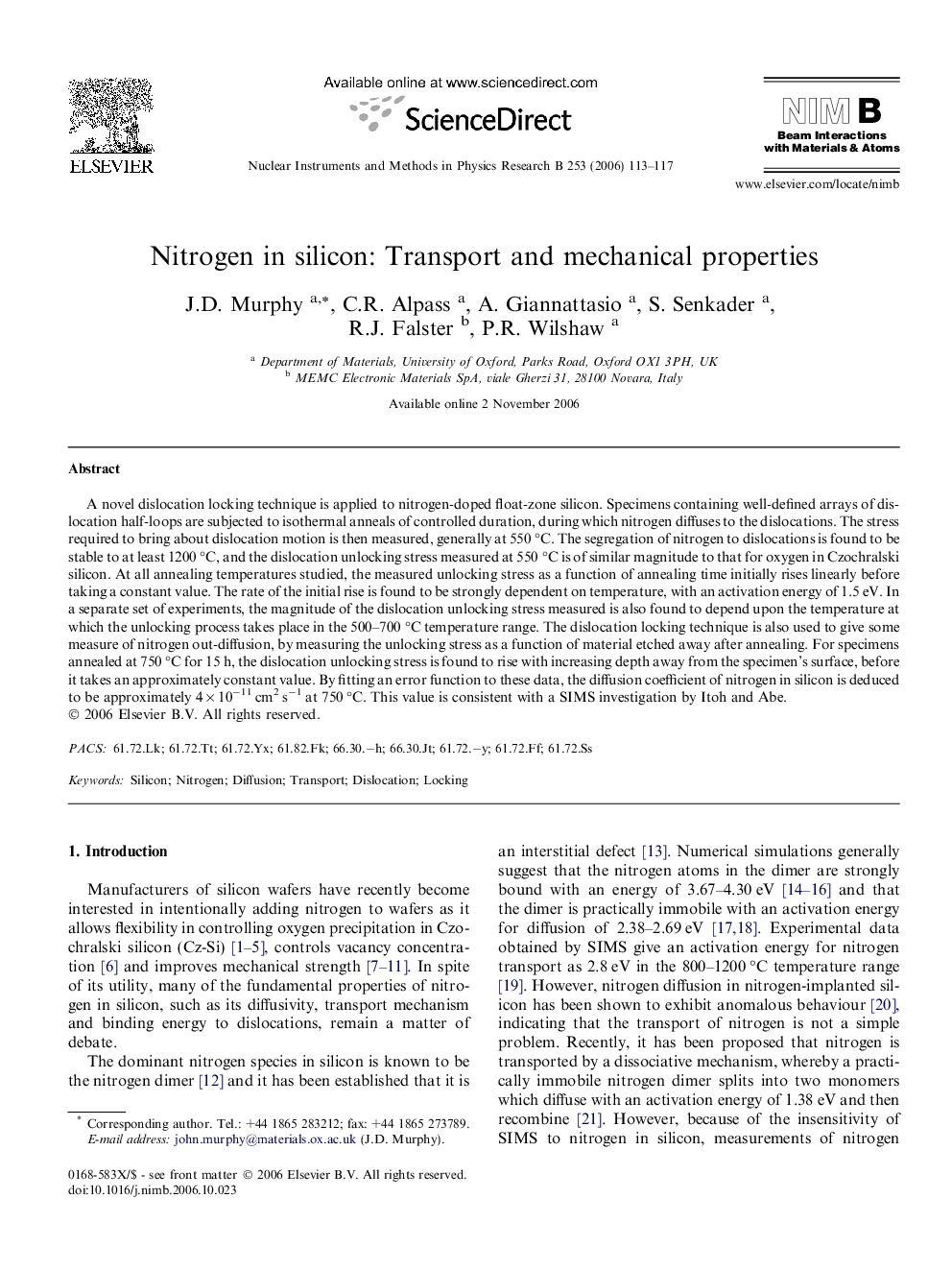| Article ID | Journal | Published Year | Pages | File Type |
|---|---|---|---|---|
| 1687932 | Nuclear Instruments and Methods in Physics Research Section B: Beam Interactions with Materials and Atoms | 2006 | 5 Pages |
A novel dislocation locking technique is applied to nitrogen-doped float-zone silicon. Specimens containing well-defined arrays of dislocation half-loops are subjected to isothermal anneals of controlled duration, during which nitrogen diffuses to the dislocations. The stress required to bring about dislocation motion is then measured, generally at 550 °C. The segregation of nitrogen to dislocations is found to be stable to at least 1200 °C, and the dislocation unlocking stress measured at 550 °C is of similar magnitude to that for oxygen in Czochralski silicon. At all annealing temperatures studied, the measured unlocking stress as a function of annealing time initially rises linearly before taking a constant value. The rate of the initial rise is found to be strongly dependent on temperature, with an activation energy of 1.5 eV. In a separate set of experiments, the magnitude of the dislocation unlocking stress measured is also found to depend upon the temperature at which the unlocking process takes place in the 500–700 °C temperature range. The dislocation locking technique is also used to give some measure of nitrogen out-diffusion, by measuring the unlocking stress as a function of material etched away after annealing. For specimens annealed at 750 °C for 15 h, the dislocation unlocking stress is found to rise with increasing depth away from the specimen’s surface, before it takes an approximately constant value. By fitting an error function to these data, the diffusion coefficient of nitrogen in silicon is deduced to be approximately 4 × 10−11 cm2 s−1 at 750 °C. This value is consistent with a SIMS investigation by Itoh and Abe.
